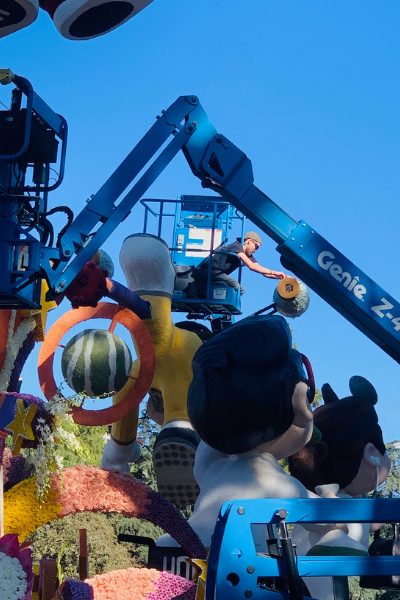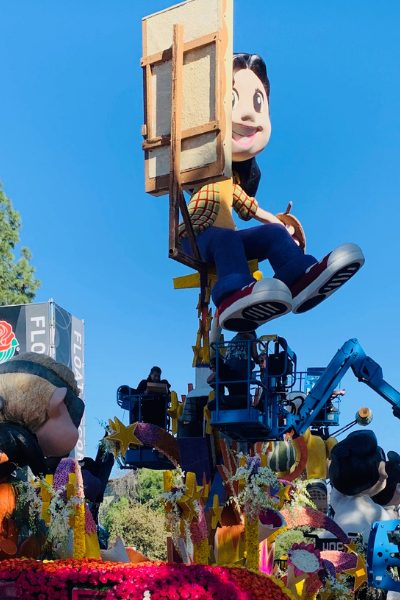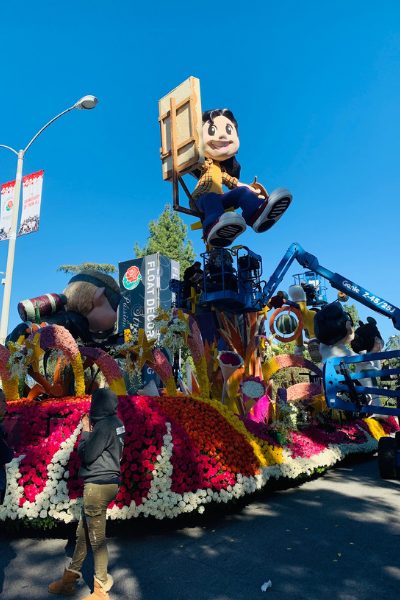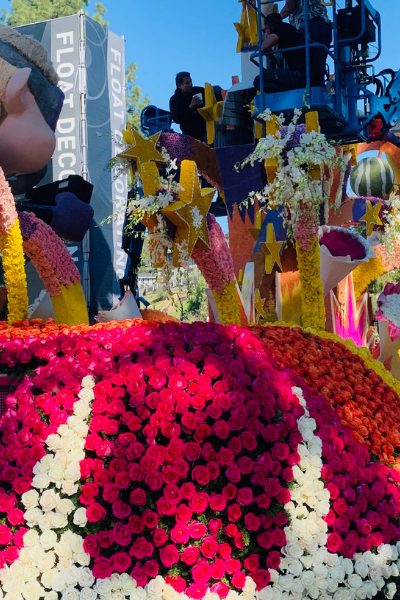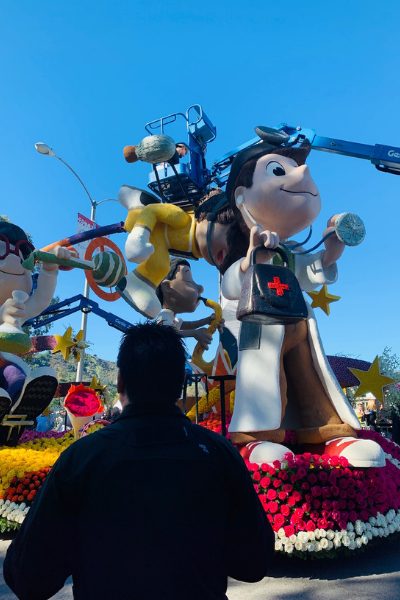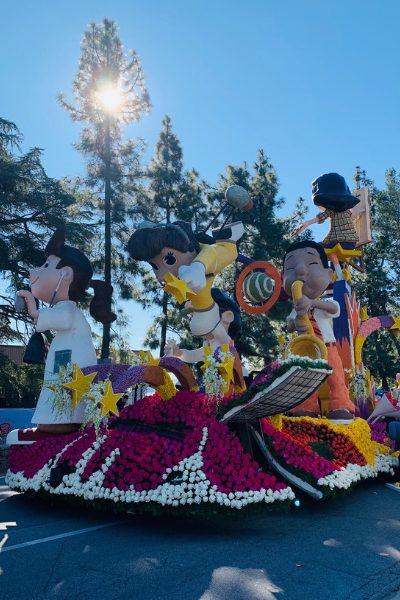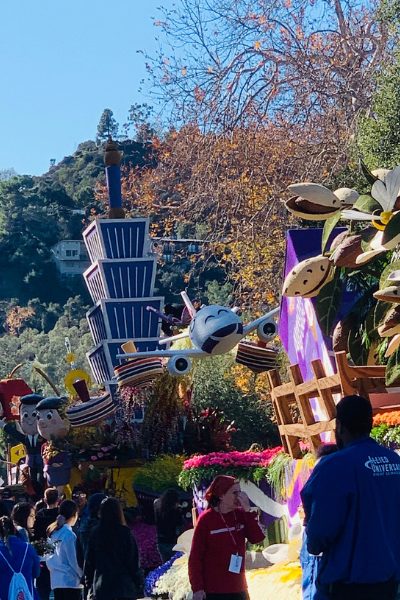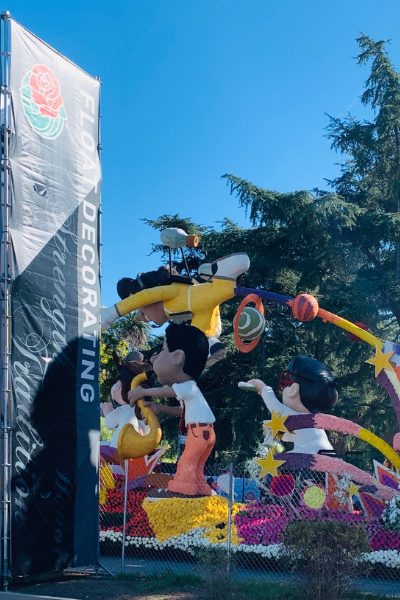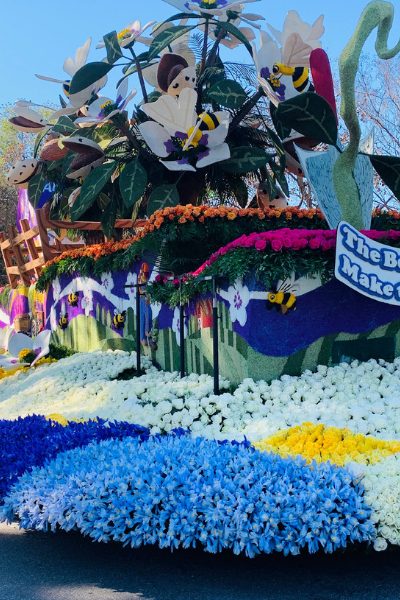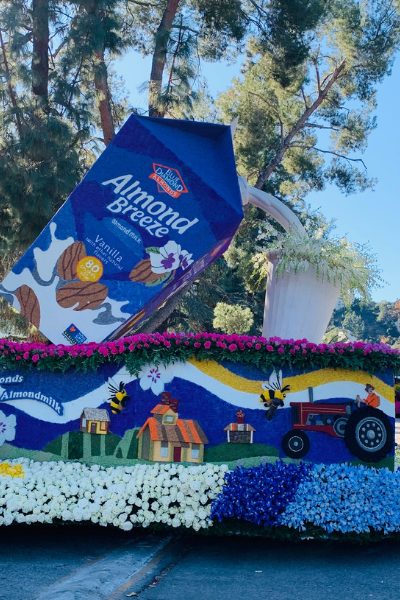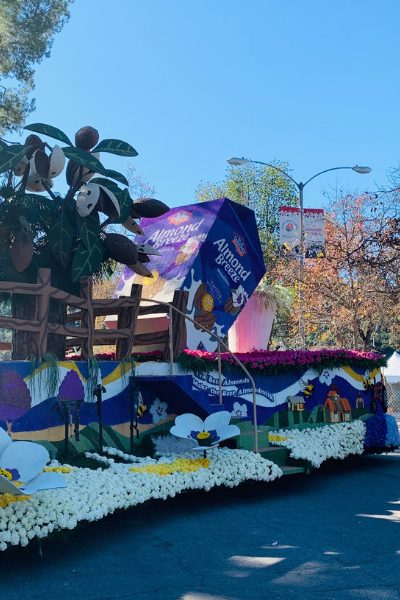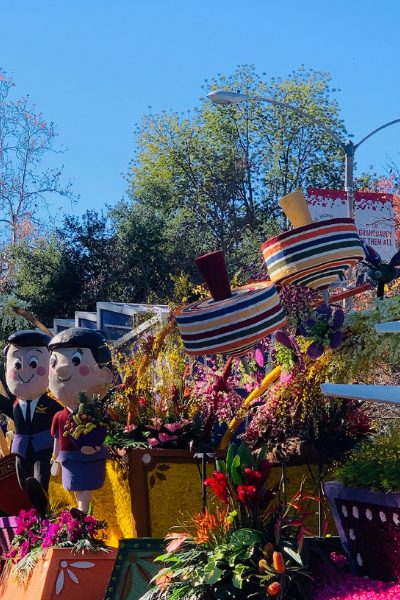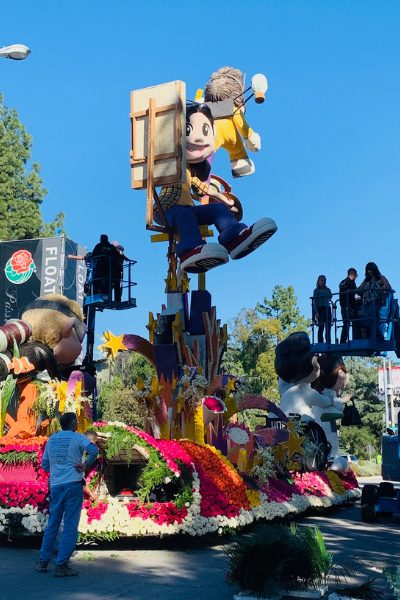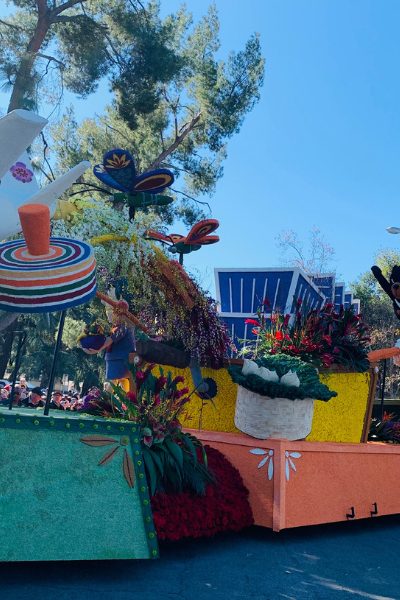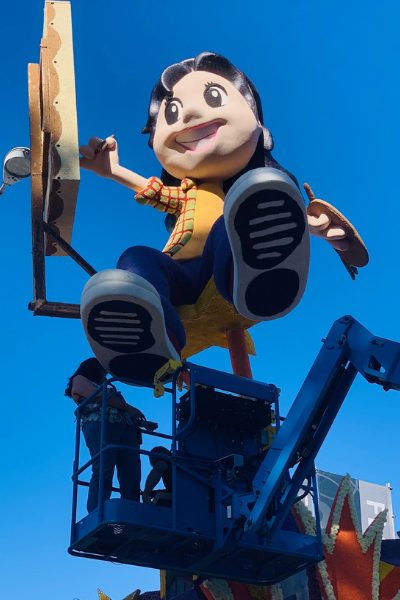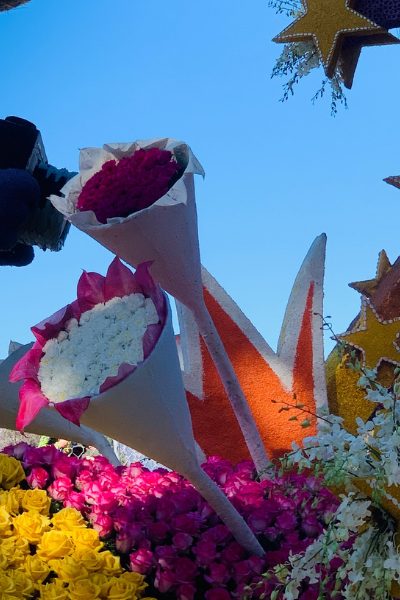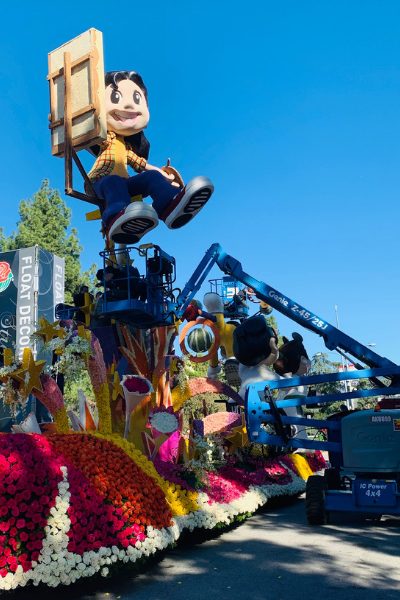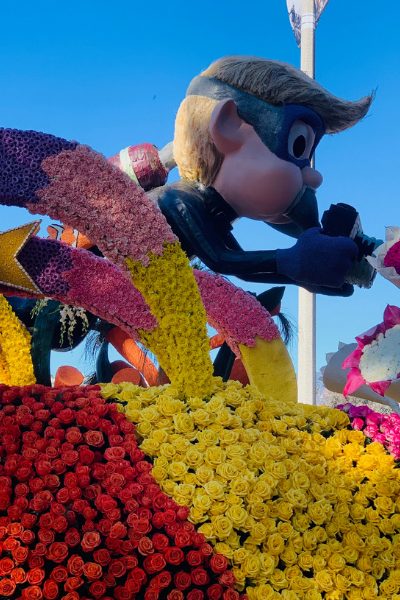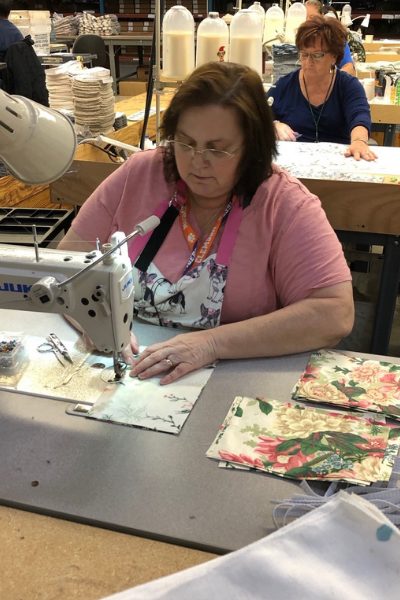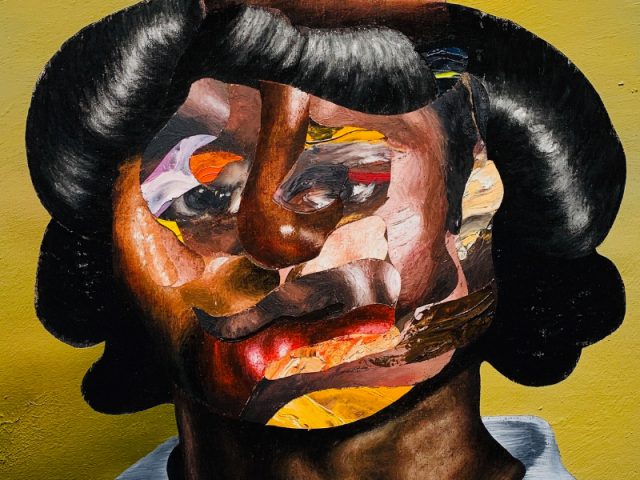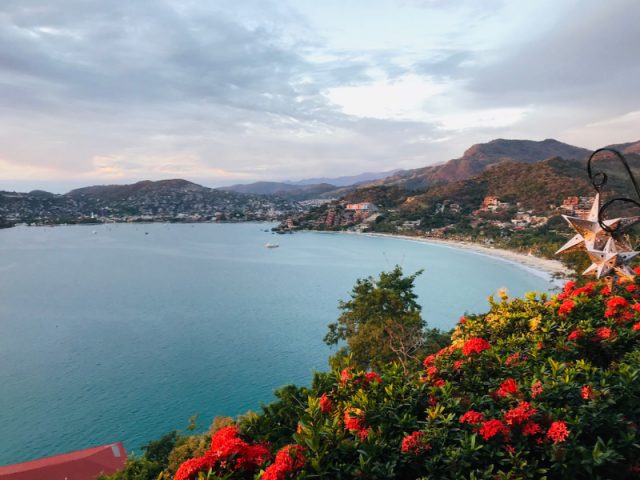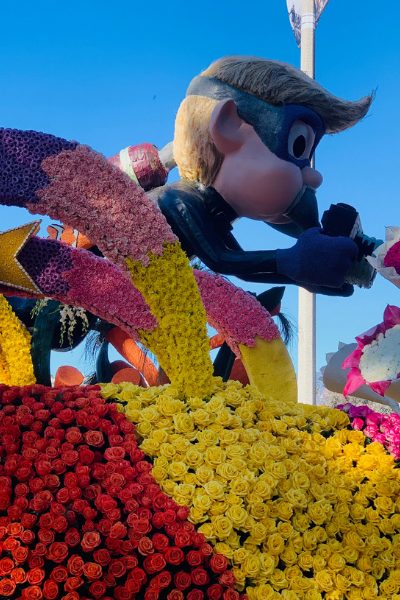
Travel Guide: Pasadena, CA
January 9, 2020
Roses are red, the skies were blue, I got to check off a bucket list item too! Read my behind-the-scenes look at the Rose Bowl Parade!
Over the holiday season I was able to check off an item that has been on my bucket list for 36 years! In 1984 and again in 2008, I attended the Rose Bowl Game and The Rose Parade while cheering on my alma mater, University of Illinois. And every year in between and through 2020, I have watched The Rose Parade on television, but I have never been privy to how the floral floats are made and built. This year, my dear friend Connie McCreight and I spent half a day in Pasadena getting an inside and outside behind-the-scenes look at one of the decorating facilities near the stadium and watched hundreds of volunteers and master float builders put the finishing touches on six floats. I felt as though we were part of the industry documentary series “How It’s Made”! Being garden enthusiasts, we both asked the “White Suiters” lots of questions. The White Suiters is the name given to the 935 Tournament of Roses volunteers that annually donate a combined 80,000 hours of their time.
Some of their secrets shared and tidbits we discovered include:
- The parade theme changes yearly. Each float entry must submit two design ideas that adhere to the theme of the parade.
- There is a total of 45-55 floats in the parade.
- Each float is constructed on a self-propelled chassis.
- The chassis consists of a metal support structure (including chicken wire and a plastic skin that is sprayed with polyvinyl for the plants and flowers to be attached to) as well as hydraulic, robotic and electronic systems. The floats utilize state of the art technology and often include fire and water components.
- Each float costs between $250,000- $1,000,000 to build.
- Every inch of every float must be covered with flowers and or other natural materials such as leaves, seeds, fruits, vegetables, petals, stems, grasses, moss or bark. No paint allowed!
- 3-4 million flowers/roses are used each year to create the floats. That is 60,000-75,000 per float.
- Flowers and greenery are sourced from around the world (Holland, New York, California) with many of the roses coming from Ecuador.
- Nonperishable organic materials are placed on the floats starting in October.
- On December 31, the flowers (remember, they are perishable) are placed in individual vials of water and set into the floats one by one so they do not wilt prior to the parade kick-off.
- The parade route is 5 ½ miles long.
- The floats travel no more than 5 MPH and the float drivers can only see the ground below them. Each has an “observer” hidden in the float that communicates with the driver via intercom.
- The floats must collapse to no more than 16 FT high to pass under a freeway overpass.
- The floats are judged on floral presentation, design and entertainment value.
- After the parade is over, the floats are dismantled, and the perishable flowers are recycled into mulch.
Of the floats we got up close and personal with, Blue Diamond Growers was my favorite float, designed and created by Artistic Entertainment Services. The float depicted an almond tree in bloom, made from coconut, green split peas and parsley flakes with yellow rose accents. The bees in the tree were decorated in yellow strawflower, black onion seed and lunaria petals. The float had an array of flowers such as blue statice, button mums to thousands of red, orange and pink roses.
Still on my bucket list? You bet, next time I am in California for the holidays, I want to volunteer and help put the finishing touches on a float!

Share
You Might Also Like
Find us on Instagram




